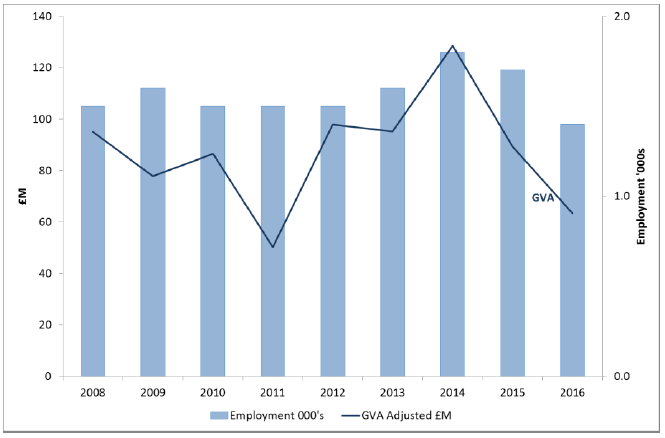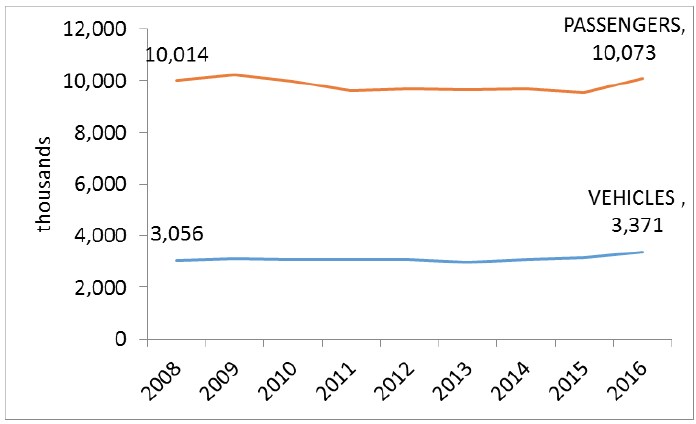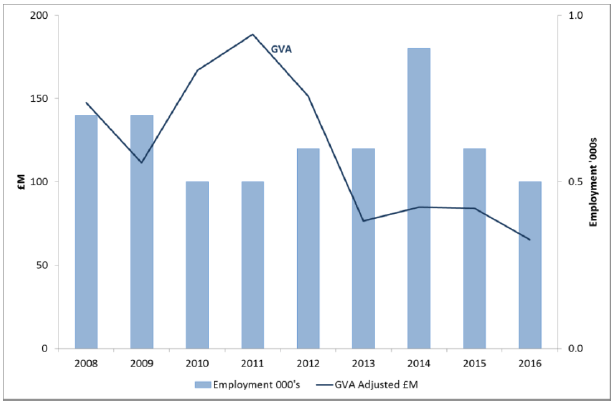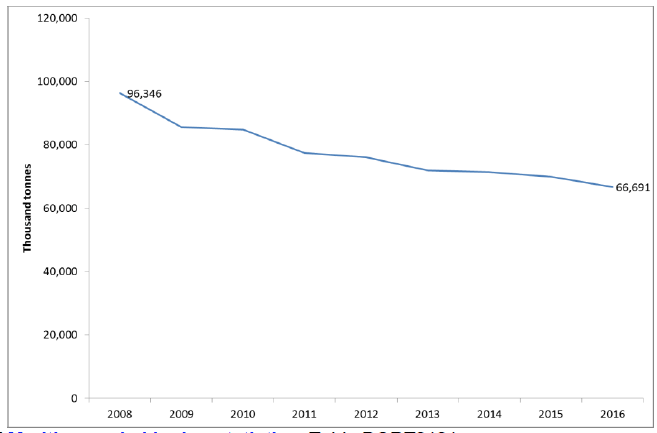Scotland's marine economic statistics 2016
The publication presents economic statistics for industrial categories defined as part of the marine sector.
This document is part of a collection
9. Sea & Coastal Water Transport
9.1 Introduction
This sector includes passenger and freight transport though they are discussed separately. Inland water transport is not included.
Sea and coastal water transport is an essential part of Scotland's transport network. It is key for connectivity and supporting both island and mainland communities. One quarter of Scotland’s total freight tonnage, including exports, was carried by water transport in 2016[6].
Supplementary water transport information is taken from the Transport Scotland Scottish Transport Statistics publication, supported by data from the Department of Transport statistics.
9.2 Passenger water transport – description
Sea and coastal passenger water transport includes the transport of passengers on vessels designed for operating on sea or coastal waters.
It includes:
- transport of passengers over seas and coastal waters, whether scheduled or not:
- operation of excursion, cruise or sightseeing boats
- operation of ferries, water taxis etc.
and
- renting of pleasure boats with crew for sea and coastal water transport (e.g. for fishing cruises)
This class excludes:
- restaurant and bar activities on board ships, when provided by separate units,
- renting of pleasure boats and yachts without crew,
- renting of commercial ships or boats without crew,
- operation of “floating casinos”.
9.3 Passenger water transport – economic key points
In 2016 water passenger transport generated £63 million GVA: accounting for 0.05 % of the overall Scottish economy, and 1.6 % of the marine economy GVA.
In terms of employment, water passenger transport provided employment for 1,400 workers, again contributing 0.05 % to total Scottish employment, and 3 % of the marine economy employment.
9.4 Passenger water transport – trends
Table 13 : Passenger water transport - GVA, turnover, employment and GVA per head, 2008 to 2016 (2016 prices)
| Year | GVA £M | Turnover £M | Employment Headcount 000's | GVA Per Worker £ |
|---|---|---|---|---|
| 2008 | 95 | 311 | 1.50 | 63,381 |
| 2009 | 78 | 374 | 1.60 | 48,617 |
| 2010 | 87 | 259 | 1.50 | 57,732 |
| 2011 | 50 | 382 | 1.50 | 33,439 |
| 2012 | 98 | 328 | 1.50 | 65,284 |
| 2013 | 95 | 365 | 1.60 | 59,474 |
| 2014 | 128 | 338 | 1.80 | 71,384 |
| 2015 | 89 | 223 | 1.70 | 52,559 |
| 2016 | 63 | 168 | 1.40 | 45,286 |
Between 2015 and 2016 passenger transport GVA fell by 29% and employment fell by 18%.
In the longer term trend, passenger transport GVA (adjusted to 2016 prices) fluctuated between 2008 and 2016, with 2016 values being the second lowest in the series. GVA is down by one third and employment by 7%.
Figure 11 : Passenger water transport – GVA and employment (headcount), 2008 to 2016 (2016 prices)

Transport Scotland statistics show that, the number of passengers in 2008 was very similar to 2016, while the number of vehicles increased by 10%.
Figure 12: Passenger water transport - numbers of passengers and vehicles carried on ferry routes, 2008 to 2016

Source: Transport Scotland from ferry operators – not National Statistics
9.5 Freight water transport– description
This group includes the transport of freight on vessels designed for operating on sea or coastal waters.
- transport of freight over seas and coastal waters, whether scheduled or not
- transport by towing or pushing of barges, oil rigs etc.
- renting of vessels with crew for sea and coastal freight water transport
It excludes:
- storage of freight,
- harbour operation and other auxiliary activities such as docking, pilotage, lighterage, vessel salvage
- cargo handling
- renting of commercial ships or boats without crew
9.6 Freight water transport– economic key points
In 2016 freight water transport generated £65 million GVA: accounting for 0.05 % of the overall Scottish economy, and 1.7 % of the marine economy.
In terms of employment, water freight transport provided employment for 500 workers, contributing 0.02 % to total Scottish employment, and 0.7 % of the marine economy employment.
9.7 Freight water transport – trends
Table 14 : Freight water transport - GVA, turnover, employment and GVA per head, 2008 to 2016 (2016 prices)
| Year | GVA £M | Turnover £M | Employment Headcount 000's | GVA Per Head £ |
|---|---|---|---|---|
| 2008 | 147 | 439 | 0.70 | 210,532 |
| 2009 | 111 | 366 | 0.70 | 159,023 |
| 2010 | 167 | 328 | 0.50 | 333,630 |
| 2011 | 189 | 380 | 0.50 | 377,102 |
| 2012 | 152 | 267 | 0.60 | 252,780 |
| 2013 | 77 | 366 | 0.60 | 127,502 |
| 2014 | 85 | 276 | 0.90 | 94,382 |
| 2015 | 84 | 242 | 0.60 | 140,417 |
| 2016 | 65 | 178 | 0.50 | 130,400 |
9.8 Freight water transport – trends
From 2015 to 2016 water freight transport GVA (adjusted to 2016 prices) fell by almost a quarter (23%) and employment fell by 17%. GVA reached a peak of £189 million in 2011, but between 2008 and 2016 GVA fell by over a half (56%) and employment fell by 29%.
Figure 13 : Freight water transport - GVA and employment (headcount), 2008 to 2016 (2016 prices)

Passenger water transport produced similar GVA to freight water transport in 2015 and 2016. However, because freight transport employed fewer people, the GVA per worker in freight water transport is almost three times that of passenger transport.
Figure 14 shows Transport Scotland’s statistics for the tonnage of freight traffic through Scottish ports. There were 67 million tonnes of freight handled by ports in Scotland in 2016. However, between 2008 and 2016 the total tonnage of freight traffic through Scottish ports reduced by 31%.
Figure 14 : Freight water transport – freight tonnage, Scottish ports, all freight traffic, 2008 – 2016

Source: DfT Maritime and shipping statistics Table PORT0101
9.9 Freight water transport – by geography
The highest freight traffic in 2016 was through Forth ports (27 million tonnes), Clyde ports (9 million tonnes) and Sullom Voe ports (6 million tonnes).
Contact
There is a problem
Thanks for your feedback